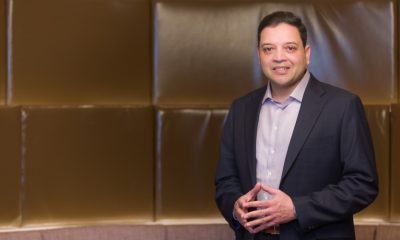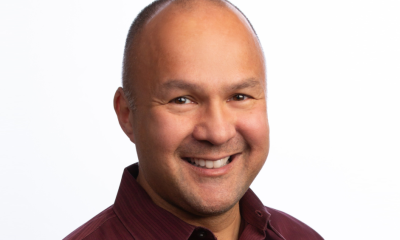Interviews
Dr Mark Goldspink, CEO of The ai Corporation (ai) – Interview Series

Dr Mark Goldspink is the CEO of The ai Corporation (ai), they offer unique self-service fraud detection solutions that are considered by many industry “thought leaders” to be the best in the world. The solutions, including a new “state of the art” machine learning protect and enrich payments experiences for more than 100 banks, over three million multi-channel merchants and over 300 million consumer cardholders. They also monitor over 25 billion transactions and authorisations each year.
What initially attracted you to machine learning and AI?
AI is the only way to undertake business decision making with large data sources in an efficient manner.
My first use of machine learning (1992) was looking at price elasticity in the fuel sector. Each service station and product has their own elasticity index. We used AI to create a predictive pricing tool to help us to understand the relationship price has on the quantity demanded. That tool is still used around the world today.
Could you briefly explain what The ai Corporation (ai) is?
ai facilitates the digitisation of payment solutions by offering enterprise cloud products and services. Put simply we aim to future proof our customers payment technology to ensure they stay aligned with the wider, ever-evolving digital marketplace. We believe that payments should become invisible, so businesses can focus more on managing their customers and spend less time worrying about how to take payments.
What are some of the machine learning technologies that are used to flag potential threats and fraud?
There are many different methods and techniques used across the fraud and threat detection landscape. Early examples include Bayesian logic and decision trees. Later innovation led to a wide adoption of neural networks, which are still largely used today. The rapid adoption of machine learning (ML) across other industries has encouraged further adoption of several other methods, such as unsupervised techniques, XGBoost and others. Most businesses opt to develop their own methods, which are usually based on existing methods to improve detection performance.
Currently, even with machine learning doing most of the ‘heavy lifting’, there is still a large amount of monitoring that is required to keep on top of fraud. How can automating the fraud management process using model orchestration solve this problem?
Most fraud systems employ multiple models to detect an optimal amount of fraud at the same time as reducing the ‘insult’ rate of declining legitimate payments. However, the number one issue with those systems, is the huge amount of additional governance that is required to manage those models. That governance and management work is usually manual, and the more models that are used, the more manual effort is required to ensure the models continue to perform well.
Model orchestration is revolutionising the way we manage fraud systems. With orchestration, the machine effectively manages itself. When models are recognised as not performing well, they are replaced with a new model or retrained on the latest data. This process utilises automated processes to retrieve performance statistics for the live models, as well as the same statistics for any offline auto-ml produced models. When offline models are performing well, they are promoted to production. This forms a closed loop, automated system for optimal fraud detection and business processes.
Could you provide some examples of cybersecurity or fintech threats that have previously been detected by machine learning?
Here at ai, we are constantly preventing fraud using our machine learning solution AutoPilotML, which keeps on top of fraud trends by automatically optimising the entire fraud strategy (consisting of both ML and manually produced rules). Our optimized solutions have detected account takeover and account hacking schemes in the TELCO space, for example, saving operators thousands of pounds. In fact, we have detected close to $10,000,000 worth of suspicious transactions per year.
Outside of the fraud space, large scale attacks are prevented by machine learning on a daily basis. For example, Microsoft have been detecting and immediately preventing cyberattacks that originate from botnets for years. In February 2018, they prevented a huge Emotet botnet attack almost immediately), using what they called ‘layered machine learning’, comprising of both client and server side machine learning models.
Cybersecurity threats often arise from the dark web, could you discuss some of the Dark Web Managed Services that are currently offered?
ai offers a dark web monitoring service, powered through Skurio’s SaaS application, to inform and protect compromised customers as soon as any of their data is exposed to the Dark Web. We believe that partnership is unique and provides our users with world leading cyber intelligence, which automatically scans websites, marketplaces, and forums to detect incidences of a customer’s data appearing on the Dark Web.
Is there anything else that you would like to share about The ai Corporation (ai)?
Building great products coupled with the correct processes can only be achieved by having a world-class team. I am extremely proud of team ai and it is that teamwork which helps us to be innovative.
It is also the teamwork that makes working at ai enjoyable and motivating for me. It is the most rewarding thing about being a leader. Helping people develop and grow.
Thank you for the great interview, readers who wish to learn more should visit The ai Corporation (ai).












